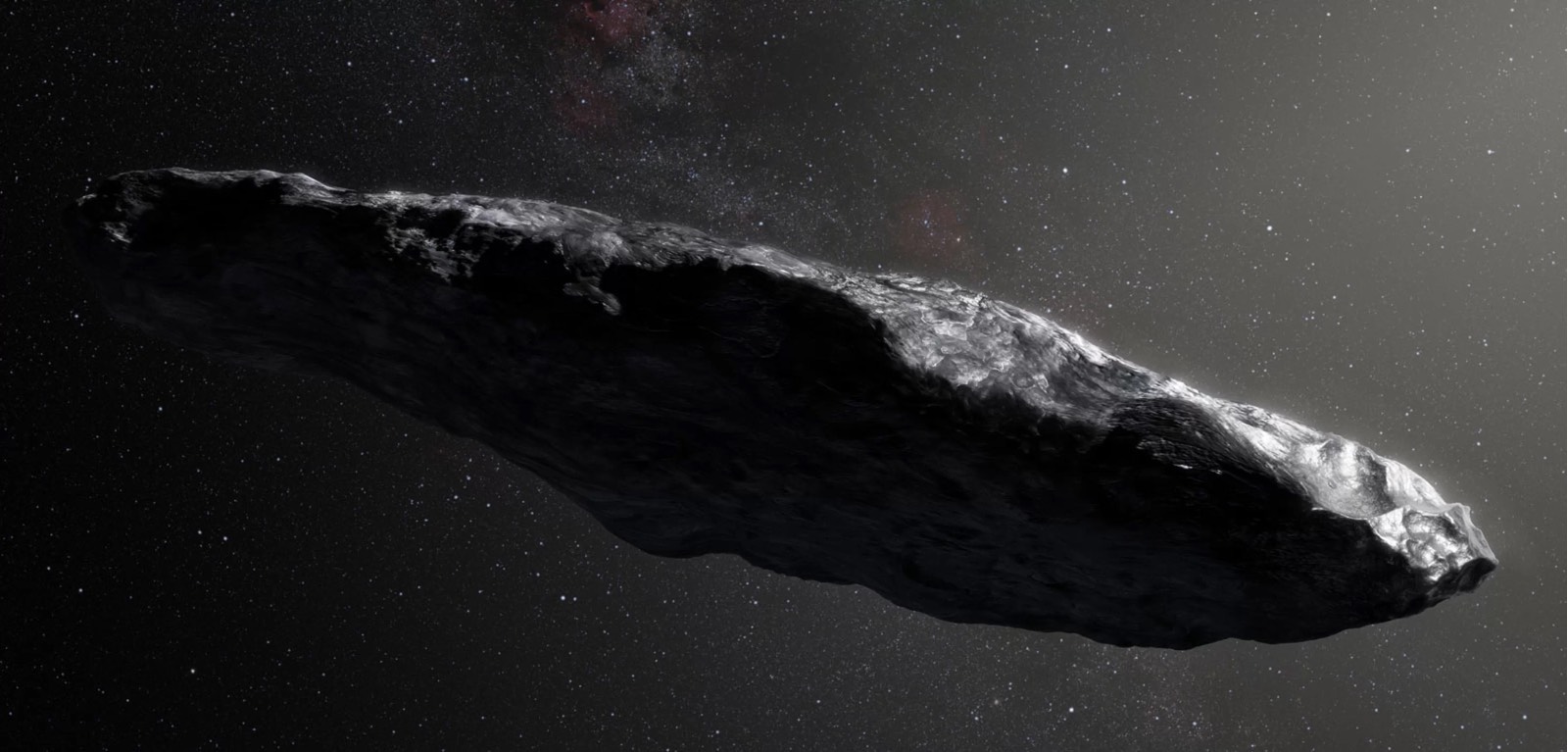Something Violent Happened to Our Solar System's First Interstellar Visitor

An interstellar object called 'Oumuamua has confounded astronomers ever since it passed through our solar system in October of last year.
Scientists initially thought that the object — the first-ever visitor from another solar system spotted by Earth-based telescopes — was a comet. Later, they considered it an asteroid and even later described it as a possibly comet-like icy body with a rocky crust.
Now, scientists have found that in addition to its confusing appearance, 'Oumuamua — an up to 1,300-foot-long (400 meters), cucumber-shaped object — likely has a rather dramatic history. [Danger! Falling Rocks: Meteorites and Asteroids (Infographic)]
When astronomers from Queen's University Belfast in Northern Ireland observed the changes in the object's brightness, they found that it is not spinning regularly, like the majority of known asteroids and small bodies in the solar system do. Rather, it is chaotically tumbling.
'Oumuamua's erratic motion might be a result of a collision with another asteroid, said Wes Fraser, one of the researchers behind the latest paper on 'Oumuamua, published Feb. 9 in the journal Nature Astronomy. This collision, in fact, may have been what thrust 'Oumuamua out of its native solar system and on a trajectory toward the sun.
"While we don't know the cause of the tumbling, we predict that it was most likely sent tumbling by an impact with another planetesimal in its system, before it was ejected into interstellar space," Fraser said in a statement.
"Our modeling of this body suggests the tumbling will last for many billions of years to hundreds of billions of years before internal stresses cause it to rotate normally again," Fraser said.
Sign up for the Live Science daily newsletter now
Get the world’s most fascinating discoveries delivered straight to your inbox.
Moreover, the researchers found that the oddball object must have a more complex composition than bodies similar in size known from the solar system. When scientists studied the measurements of light reflected from 'Oumuamua's surface, they found that it varied in color in a way no astronomer could at first explain. ['Oumuamua: The Solar System's First Interstellar Visitor in Photos]
Fraser and his team concluded that while the majority of 'Oumuamua's surface was the color of dirty snow, the object had a large red spot on its longer side.
"Most of the surface reflects neutrally, but one of its long faces has a large red region," Fraser said. "This argues for broad compositional variations, which is unusual for such a small body."
The latest findings add to the mystery of the interstellar interloper, the scientists said.
"It is quite unusual compared to most asteroids and comets we see in our own solar system," Fraser said in the statement.
The Queen's University Belfast team has already published three papers on 'Oumuamua since the object zoomed through our solar system last year. When first spotted, 'Oumuamua was some 20 million miles (33 million kilometers) from Earth and already moving away.
Scientists realized that, due to its trajectory, the object couldn't have originated in the solar system. Once researchers figured that out, they chased the last glimpses they could get of the mysterious visitor using various telescopes, including the European Southern Observatory's (ESO) Very Large Telescope (VLT) in Chile.
What perplexed them at first was that they didn't see behavior typical for a comet. They expected the first interstellar visitor to be a comet simply because there are many more icy bodies than rocky bodies (asteroids) in the solar system, and the same is expected in other planetary systems. However, a previous paper by Queen's University Belfast scientists published in December 2017 found that 'Oumuamua may be a chunk of ice covered with a thick, rocky crust.
Scientists will probably never answer all the questions about 'Oumuamua, because the object is long gone and never to return. But they believe that many more interstellar objects will be observed in the coming years as new, powerful telescopes, such as the Large Synoptic Survey Telescope in Chile, come online.
Originally published on Live Science.










